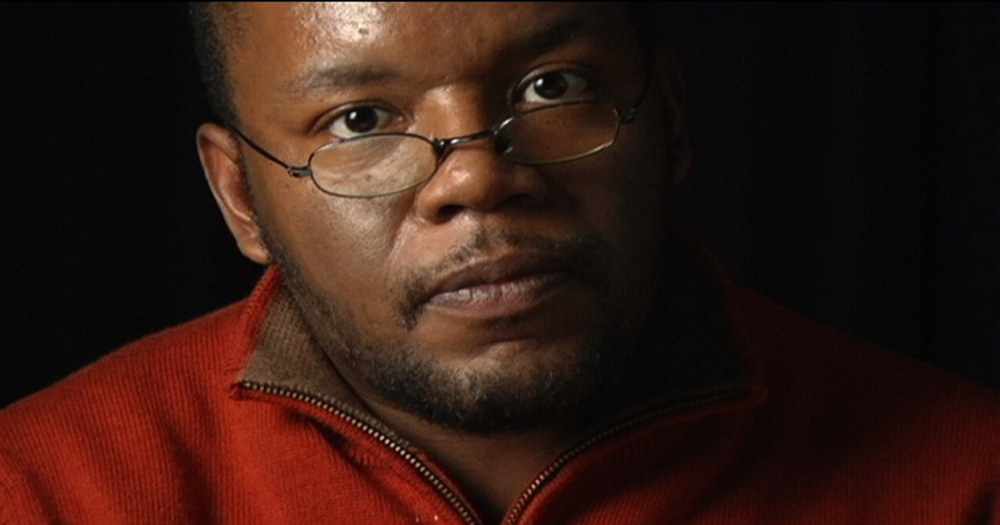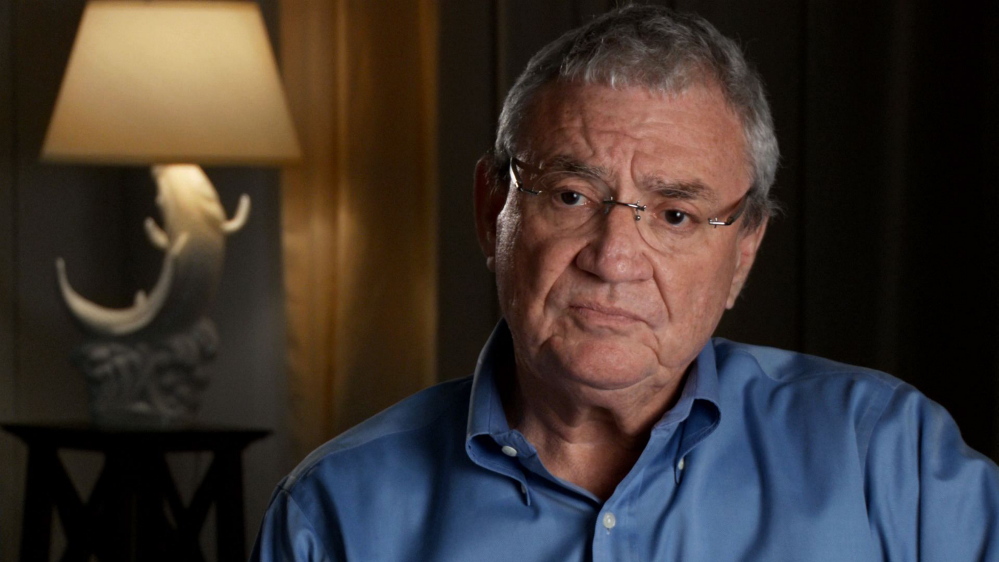The morning of April 26, 2003, started badly.
And it got worse.
I’d awakened absurdly early in Miami, where I was The Washington Post’s Southern bureau chief, to catch a flight to Texas. I was supposed to write a piece about the family of the last missing U.S. soldier after the fall of Iraq, a 24-year-old Army mechanic named Edward Anguiano. But when I fished the New York Times off my front porch and sleepily scanned the headlines, there was my story – my story! – on the front page of the competition. I barely recognized the byline.
It was some guy named Jayson Blair.
My lousy day got lousier once I arrived in Anguiano’s home town of Los Fresnos, a speck on the map near the Mexican border at the southern tip of Texas. Anguiano’s mother, who had earlier agreed to an interview, blew me off. While I waited at a gas station for her to call me back, I flipped through a folder of background reading. Something bothered me about one of the articles: a San Antonio Express-News piece about Anguiano. But I couldn’t figure out why.
Later that weekend, I dug the Times out of my suitcase and did the only sensible thing that a traveling correspondent would do in that situation in that era: I went to dinner and ordered an expense-account-imploding cocktail at a nice spot on South Padre Island. With a lovely view of the Gulf of Mexico in front of me, I laid the Times and Express-News articles side-by-side and started underlining the similarities. When I was finished there was a lot of ink on both pieces.
The next morning, I called the national desk at The Post and suggested we write about what appeared to be an egregious case of plagiarism. But I wanted no part of the story. I felt like a member of a kind of tribe of roving reporters – friendly competitors who weren’t above sharing some rural sheriff’s cellphone number or pointing each other to the right courthouse or victim’s house. I didn’t relish the idea of doing a gotcha piece about another journalist. For years, I felt so conflicted about the events that took place on that reporting trip that I seldom mentioned my small, early role in what became a major scandal. I’d never done an extended interview about what happened that weekend until a few days ago when a reporter called me for a piece she was writing about a new documentary about Blair called “A Fragile Trust,” directed by the seasoned filmmaker Samantha Grant, which airs Tuesday on many PBS stations and Saturday on WETA as part of the “Independent Lens” series.
The initial reaction in Washington to my proposal that we expose Blair’s plagiarism could be summed up in a single word: “Meh.” It looked like The Post was going to pass.
I decided to drive out to the house of Anguiano’s mother to make one last attempt to persuade her to talk. When I arrived, the house was guarded by sheriff’s deputies. As I stood staring at the home, wishing I was back in Miami, a woman walked up to me. “I’m Macarena,” she said.
“Macarena Hernandez!” I said.
Here was the author of the Express-News piece I’d read earlier standing right next to me. For a moment I thought that maybe she was a stringer for the Times – they had lots of them – and she’d given her material to Blair without being credited. I stammered something about what a great job she’d been doing on the story. Her response confirmed everything I suspected: “Did you see the New York Times?”
If all this had taken place 11 days ago, instead of 11 years ago, I’m sure I would have tweeted about the whole mess right there on the side of the road. In the documentary, Blair whines that his fabrications may have been the result of his succumbing to the pressures of a new mandate at the Times to move faster and have more impact, but that complaint sounds quaint in light of how much more rapidly things move now.
Hernandez went on to tell me how she’d interned with Blair at the Times and how she’d had to cut short her internship to return home and attend to an ailing family member. It was as if Blair was living the life Hernandez should have been living. I was peeved and I was frustrated. Peeved at Blair for ripping off this young and impressive reporter. Frustrated that The Post wasn’t pursuing the story. (At one point, a veteran reporter who was reluctant to get involved in the story grumbled, “I’ve seen worse.”)
I made another call, and this time my editor, Daniel LeDuc – who also felt strongly that The Post should write about the plagiarism – took printouts of the two stories directly to Leonard Downie Jr., the paper’s executive editor. Downie left no doubt: The Post should jump on it.
The Post’s media reporter, Howard Kurtz – now a Fox News host – would quickly expose Blair as one of the most brazen fabulists in the history of journalism – a serial plagiarist and falsifier. He’d written stories from his Brooklyn apartment but topped them with far-off datelines; he’d quoted people he didn’t interview and he’d lifted the work of others. A chain of events was set in motion by Kurtz’s excellent reporting that eventually climaxed in the resignations of the top two Times editors: Howell Raines and Gerald M. Boyd.
Just as she did in 2003, the young woman I met outside that guarded house in Los Fresnos gives this story an emotional tug in the documentary airing tonight. Hernandez recounts how she was committed to telling the stories of people whose lives went unnoticed, and she explains the implied contract between reporters and subjects, “a very fragile trust,” she says, her words an echo of the film’s title.
“A Fragile Trust” begins with Blair, now a life coach, rolling his eyes as an off-screen interviewer asks why he committed so many journalistic crimes. “This one again?” he quips, as if there were any other reason anyone would be interested in hearing from him again. “I don’t have a good answer for the question.”
Indeed.
What’s remarkable about this film, which dutifully recounts familiar events while adding little to the well-worn narrative, is how its protagonists are so utterly incapable of taking responsibility. Raines, whose imperious management style has been pegged by some Timesians as an institutional flaw that may have contributed to the Blair debacle, brushes aside a question about a memo that flagged the young reporter’s problems well in advance of Blair getting caught plagiarizing the Texas paper’s article. The memo never reached his desk, he says.
“It’s too late to be placing blame about that,” Raines says. “The Times is a big place.”
Blair somehow survived his early days at the Times despite producing an astonishing number of articles that contained factual errors. But this, Raines suggests, isn’t his fault either. “There was a reluctance on the part of mid-level supervisors to wash anyone out of the reporting program,” Raines intones.
“In looking back on the whole experience,” Raines says he can only find “one thing that I really fault myself for.”
Really? “Only one thing?” viewers are sure to think to themselves when they hear that line.
That one thing was the decision to allow Blair to be sent to Washington to cover the D.C. sniper attacks, an assignment that led to several pieces with shaky sourcing and disputed conclusions.
Blair fesses up to being a liar and laments how his actions hurt others. But he’s eager to shift blame for his failings to his editors: “Perhaps if they had looked more carefully they would have recognized that I was, at least psychologically, falling apart,” he says.
Seth Mnookin, a former Newsweek reporter whose well-researched book, “Hard News,” chronicled the Blair scandal and other problems at the Times, calls out Blair for that clunker. “That’s a kind of silly suggestion on his part – that somehow it was his employer’s responsibility to know what was going on with him when, in fact, he was doing his utmost to deceive them every step of the way,” Mnookin says.
The film ends with a standard roll call of what-they’re-up-to-now text blocks. Blair’s mentions that he “says” – the quote marks around that word emphasizing how little he can be trusted – that he has 200 clients for his life-coaching business. Viewers never get to meet any of those clients in this film, leaving us to wonder whether this is just another of Blair’s inventions. Blair may start the film rolling his eyes; if you make it through all 75 minutes, you’ll probably be rolling yours.
“A Fragile Trust” airs Sunday on PBS.
Send questions/comments to the editors.





Success. Please wait for the page to reload. If the page does not reload within 5 seconds, please refresh the page.
Enter your email and password to access comments.
Hi, to comment on stories you must . This profile is in addition to your subscription and website login.
Already have a commenting profile? .
Invalid username/password.
Please check your email to confirm and complete your registration.
Only subscribers are eligible to post comments. Please subscribe or login first for digital access. Here’s why.
Use the form below to reset your password. When you've submitted your account email, we will send an email with a reset code.